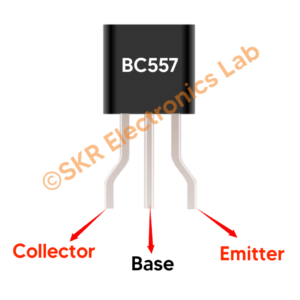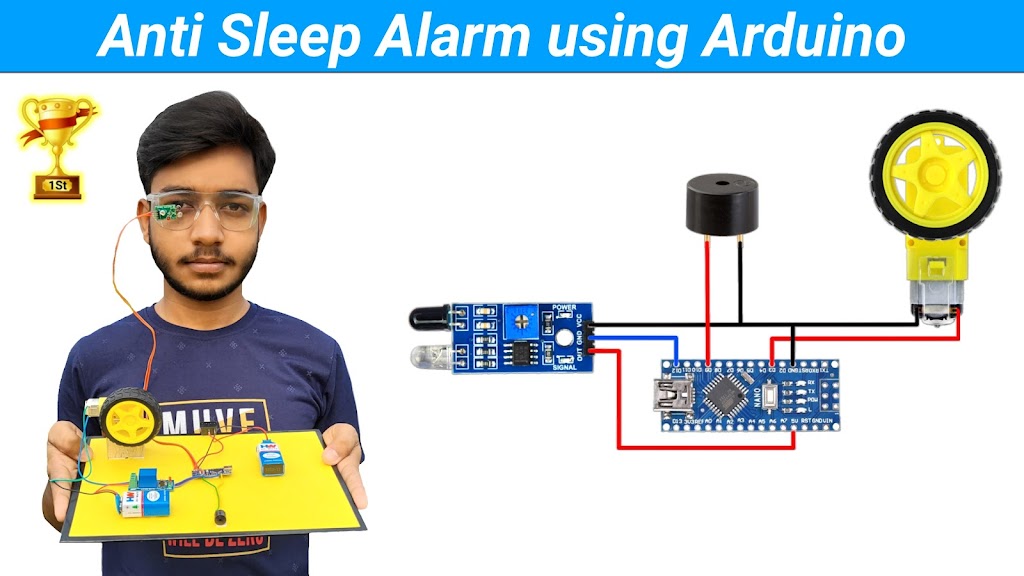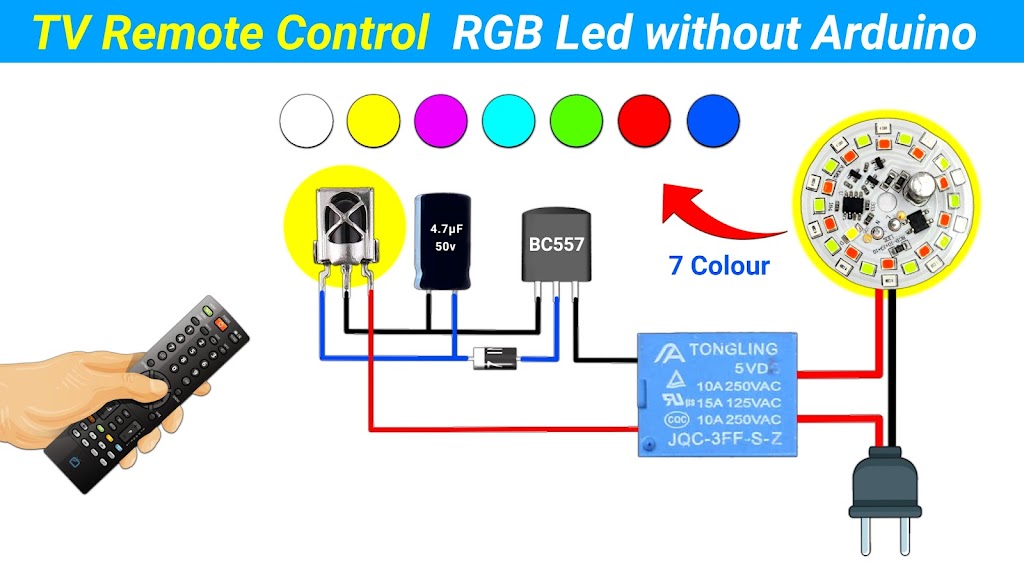Introduction
In this tutorial, I will show you how to make a security alarm system using a PIR sensor. All the security alarm systems available in the market are very costly, But today I am going to show you a security alarm system that is very sensitive and works with great accuracy. This security alarm detects any motion within 180° and turns on the buzzer. I have not used any microcontroller or Arduino to make this security alarm so there will be no coding hassle and it will be made at a very low cost.
Component’s Required :
1. PIR Sensor
3. 1N4007 Diode
4. 1K Resistor
5. Buzzer
6. Switch
8. Some wires
Circuit Diagram :
How the circuit works:
What is PIR Sensor?
Passive Infrared sensor is an electronic device that can detect changes in infrared radiation. The sensor that is generally available in the market has a range of 6 meters and can detect any motion within a 108° angle. We know that an infrared ray is transmitted from a human or other animal body. Whenever a person or animal moves within the detection area of this sensor, this sensor sees changes in infrared radiation and makes the output high. This is the brief working of this sensor.
The sensor has 3 pins – VCC, GND, and Output pin, the VCC pin is connected to the positive of the battery, the GND pin is connected to the negative of the battery and the output is obtained from the output pin.
Diode
I used a diode to protect the sensor from reverse supply.
Transistor
A buzzer will not work well with the output signal we get from the sensors. So we have to amplify the output signal, we will do this amplification using an NPN transistor.
The transistor has three pins collector, emitter, and base Since it is an NPN transistor, the emitter pin should be connected to the negative of the battery, the collector pin should be connected to the negative of the buzzer, and the base pin should be connected to the output of the sensor through a resistor. We know that when a positive supply is applied to the base pin of an NPN transistor, the current flow starts from the emitter to the collector of the transistor. Now we have connected the base pin to the output pin of the sensor through a resistor, as a result whenever the output pin goes high, the current will start flowing through the transistor.
Buzzer
We connect the positive pin of the buzzer to the positive of the battery and the negative of the buzzer to the collector pin of the transistor. As a result, whenever the output pin of the sensor is high, the transistor will turn on and the buzzer will also turn on. This is how the whole circuit works.
In short
First of all the PIR sensor will detect if there is any motion, if there is motion then the output pin of the sensor will go high and the transistor will turn on. And because the buzzer is connected with the transistor, the buzzer will also turn on. This is how the circuit works in short.






👍